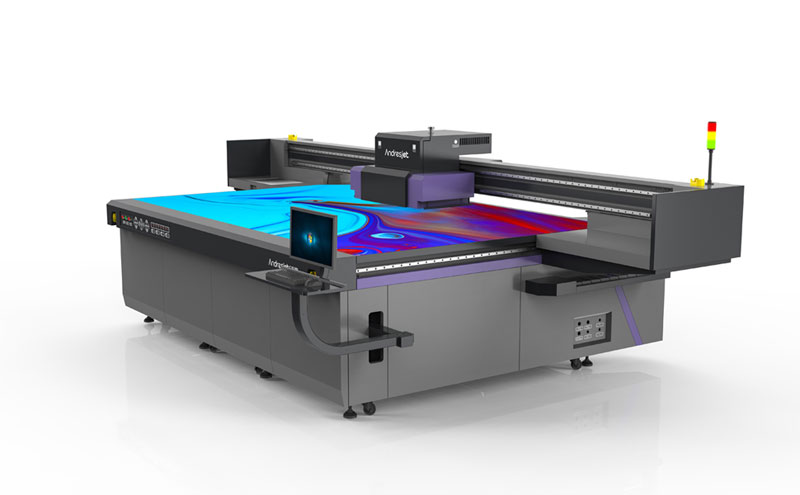How Does UV Curing Affect Print Quality?
How Does UV Curing Affect Print Quality?
In the realm of printing technology, UV curing has emerged as a pivotal process that significantly impacts print quality. UV curing, or ultraviolet curing, is a method that utilizes ultraviolet light to instantly dry or cure ink, coatings, and adhesives. This technology has gained widespread popularity across various industries, including packaging, graphics, and electronics, due to its ability to enhance print quality, increase production efficiency, and reduce environmental impact. This article delves into the intricacies of UV curing and explores how it affects print quality in multiple dimensions.

Understanding UV Curing Technology
UV curing works on the principle of photochemical reactions. When UV light is applied to ink, coatings, or adhesives that contain photoinitiators, it triggers a chemical reaction that converts liquid ink into a solid, cured state. This process occurs rapidly, often within a fraction of a second, making it ideal for high-speed printing applications. The primary components of UV-curable materials include oligomers, monomers, photoinitiators, and additives, each playing a crucial role in determining the final print quality.
Key Factors Influencing Print Quality
Print quality is a multifaceted concept that encompasses resolution, color accuracy, gloss, adhesion, and durability. UV curing directly and indirectly influences these aspects, as elaborated below.
Resolution and Sharpness: UV inks have lower viscosity compared to traditional solvent-based or water-based inks. This characteristic allows for finer ink droplet control during printing, resulting in higher resolution prints with sharper images and text. UV curing further enhances this by ensuring instant fixation of the ink onto the substrate, preventing any bleeding or spreading that could degrade resolution.
Color Accuracy and Vibrancy: UV inks offer a broader color gamut due to their ability to retain vibrant pigments during the curing process. The instant curing prevents the ink from oxidizing or fading, ensuring that the printed colors remain true to the original design. This is particularly crucial for applications requiring high color accuracy, such as packaging for luxury goods or high-end graphics.
Gloss and Finish: UV-cured prints exhibit a high gloss finish, which is often preferred for its aesthetic appeal and ability to enhance product presentation. The smooth surface achieved through UV curing also makes the prints more resistant to scratching and abrasion, preserving the gloss over time.
Adhesion and Durability: UV curing creates a strong chemical bond between the ink and the substrate, resulting in excellent adhesion properties. This ensures that the print remains intact even under harsh conditions, such as exposure to moisture, chemicals, or temperature variations. The durability of UV-cured prints makes them suitable for outdoor applications and products subject to rough handling.
Environmental Stability: UV curing is an environmentally friendly process as it emits minimal volatile organic compounds (VOCs) and reduces energy consumption compared to traditional drying methods. This not only benefits the environment but also ensures that the print quality is not compromised by external factors such as humidity or dust, which can affect solvent-based inks during drying.
Applications and Benefits
The advantages of UV curing in terms of print quality are manifested across a wide range of applications:
Packaging: UV-cured prints on packaging materials ensure vibrant colors, high gloss, and resistance to scratching, enhancing the shelf appeal of products.
Graphics and Signage: High-resolution prints with excellent adhesion and durability make UV curing ideal for outdoor signage and graphics that need to withstand weathering.
Electronics: UV curing is used in the production of printed circuit boards (PCBs) and other electronic components, where precise ink deposition and fast curing times are crucial.
Three-Dimensional Printing: UV curing enables the creation of detailed, high-quality 3D prints by rapidly solidifying layers of ink or resin.
Challenges and Considerations
While UV curing offers numerous benefits, it also presents some challenges and considerations:
Equipment Cost: UV curing requires specialized equipment, including UV lamps and control systems, which can be expensive to purchase and maintain.
Substrate Compatibility: Not all substrates are compatible with UV inks. Some materials may require pretreatment or specific coatings to ensure proper adhesion and curing.
Operator Training: Proper training is necessary for operators to handle UV inks safely and effectively, considering the unique characteristics and curing requirements.
Conclusion
UV curing is a transformative technology in the printing industry, offering unparalleled advantages in print quality, efficiency, and environmental sustainability. Its ability to enhance resolution, color accuracy, gloss, adhesion, and durability makes it a preferred choice for applications ranging from packaging to electronics. However, the adoption of UV curing also necessitates careful consideration of equipment costs, substrate compatibility, and operator training. As technology continues to evolve, further advancements in UV curing are expected to broaden its applications and refine its benefits, solidifying its position as a key determinant of print quality across industries.
